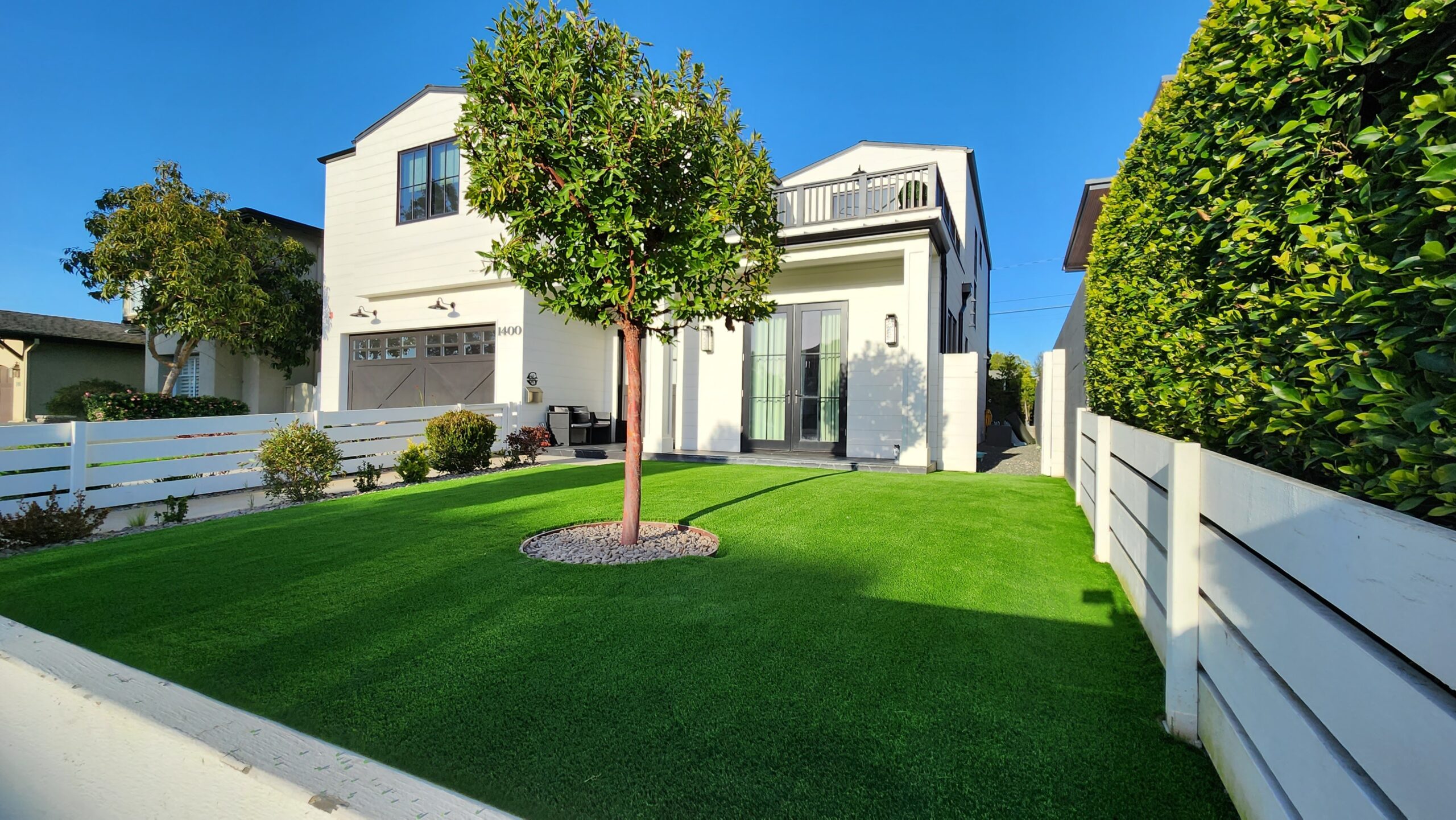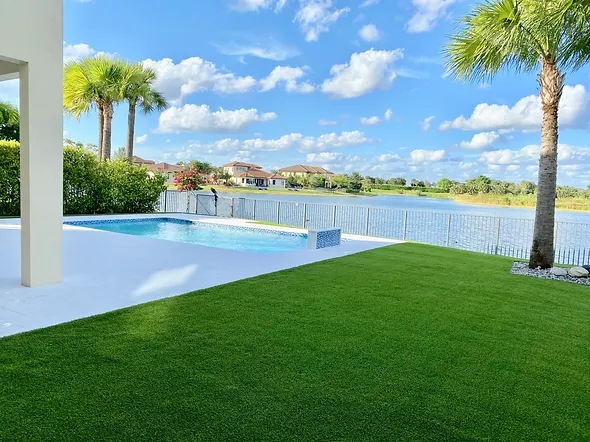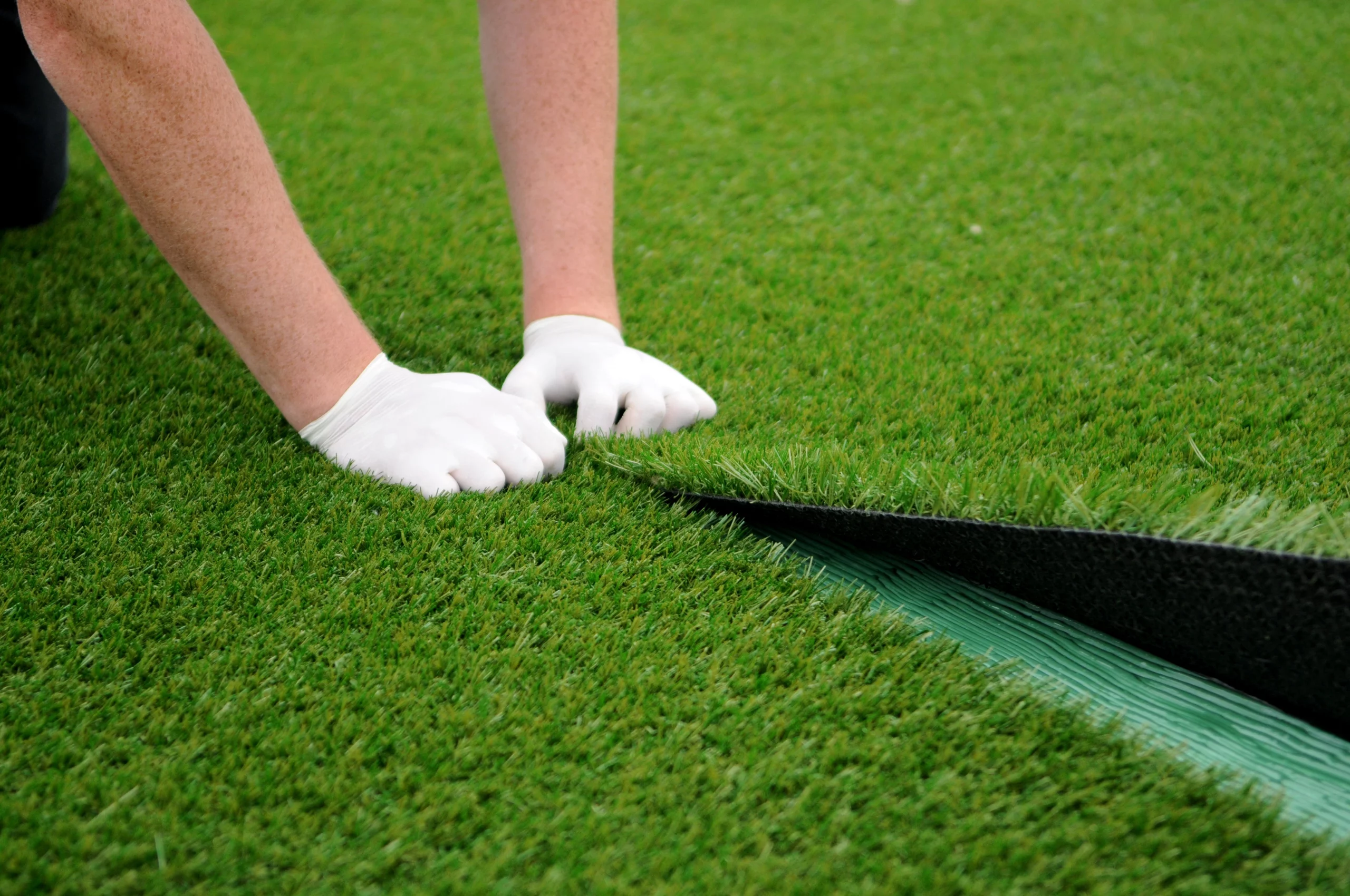The Importance of Regular Maintenance for Artificial Grass
Maintaining the pristine condition of artificial grass is crucial for extending its lifespan and ensuring it remains a vibrant, inviting space. Unlike natural grass, artificial turf doesn’t require watering, mowing, or fertilization, but it does need regular maintenance to keep it looking its best. Regular cleaning and upkeep prevent the build-up of debris, dust, and dirt, which can make the surface look unkempt and potentially damage the fibers over time.
One of the primary reasons for regular artificial grass maintenance is to preserve its aesthetic appeal. A well-maintained synthetic lawn looks lush, green, and realistic, enhancing the overall appearance of your outdoor space. This is particularly important for homeowners who take pride in their home’s exterior or businesses that want to make a good impression on clients and visitors.
Additionally, proper care of artificial turf ensures it remains safe and hygienic for use. Outdoor activities, pets, and natural elements can introduce bacteria, weeds, and unpleasant odors to the surface. Regular cleaning and maintenance routines help to mitigate these issues, creating a cleaner, healthier environment for everyone to enjoy. This is especially important in spaces used by children or pets, where hygiene is a top priority.
Moreover, consistent upkeep helps to protect your investment. Artificial grass is a significant investment, and neglecting its maintenance can lead to premature wear and tear, resulting in costly repairs or replacement. By adhering to a regular maintenance schedule, you can ensure the longevity and durability of your artificial turf, maintaining its quality and functionality for years to come.
In summary, regular maintenance of artificial grass is essential for preserving its beauty, ensuring safety and hygiene, and protecting your investment. By committing to a consistent cleaning and care routine, you can enjoy a beautiful, durable, and low-maintenance lawn that enhances your outdoor living space.
Choosing the Right Tools for Cleaning Artificial Grass
When it comes to maintaining the pristine appearance of your artificial grass, selecting the appropriate tools is crucial. The right equipment not only simplifies the cleaning process but also ensures that your synthetic turf remains in top condition for years to come. For basic artificial lawn care, a stiff brush or a synthetic turf rake is essential. These tools help in effectively removing debris and keeping the grass blades upright, mimicking the natural look of real grass.
For more thorough cleaning, especially to remove finer particles, a leaf blower or a garden vacuum can be highly effective. These devices allow for quick and easy removal of leaves, twigs, and other debris that can accumulate on the surface. However, it’s important to use them on a low setting to avoid damaging the grass blades.
When dealing with stains or spot cleaning, a mixture of water and a mild detergent proves to be an efficient solution. For this purpose, having a spray bottle on hand can make the application easier and more targeted. For tougher stains, a specialized artificial grass cleaner may be necessary. These cleaners are designed to tackle stubborn stains without harming the synthetic fibers.
Lastly, managing pet waste requires specific attention. A simple solution of water and vinegar can help neutralize odors, while a scooper or gloves are needed for solid waste removal. Ensuring you have these tools readily available will make the task of maintaining your artificial turf less daunting and more efficient, keeping your lawn looking fresh and inviting.

How to Remove Debris and Leaves Effectively
Keeping your artificial grass free of debris and leaves is crucial for maintaining its aesthetic appeal and longevity. Over time, leaves, twigs, and other debris can accumulate on the surface, making your synthetic lawn look unkempt and potentially damaging the fibers. Here are some effective strategies to ensure your artificial turf remains clean and vibrant.
Firstly, regular brushing is your best defense against debris accumulation. Use a soft-bristled brush or a broom with synthetic bristles to gently sweep the surface of your artificial grass. This not only helps remove leaves and debris but also keeps the grass blades standing upright, mimicking the natural look of real grass. It’s advisable to brush your lawn at least once a week or more frequently during the fall when leaves are more likely to accumulate.
For larger debris and leaves, a leaf blower can be an efficient tool. When using a leaf blower, start from one corner of your lawn and work your way across systematically. This method ensures that you don’t miss any spots and that all debris is collected in one area for easy removal. Be sure to use the leaf blower on a low setting to avoid damaging the grass blades.
In addition to brushing and blowing, consider installing a mesh leaf cover during the autumn months. This can significantly reduce the amount of leaves and twigs that land on your artificial turf. The cover can be easily removed and cleaned, making it a convenient solution for keeping your lawn debris-free.
By incorporating these simple yet effective methods into your artificial grass maintenance routine, you can ensure that your lawn remains clean, attractive, and free of debris and leaves. Regular upkeep not only enhances the appearance of your synthetic turf but also extends its lifespan, providing you with a beautiful, low-maintenance outdoor space for years to come.
The Best Techniques for Spot Cleaning Stains
Spot cleaning stains on artificial grass is crucial for maintaining its appearance and longevity. Stains from food, drink, or pet accidents can be unsightly and if not treated properly, can become permanent. The first step in spot cleaning is to act quickly; the sooner you address the stain, the easier it will be to remove. Begin by blotting liquid spills with a clean, dry cloth to absorb as much of the spill as possible. Avoid rubbing the stain, as this can cause it to spread or penetrate deeper into the turf.
For solid or semi-solid spills (like dropped food or pet feces), use a plastic spatula or a glove-covered hand to gently remove the substance from the grass. Once the bulk of the spill has been removed, you can proceed to clean the area. A mixture of mild detergent and warm water is effective for most stains. Apply the solution directly to the stained area and gently brush with a soft-bristled brush. Rinse the area thoroughly with water to remove any soap residue.
For more stubborn stains, such as oil or ink, specialized artificial grass cleaners may be required. These cleaners are designed to break down tough stains without damaging the synthetic fibers. Always follow the manufacturer’s instructions when using these products. After treating the stain, rinse the area well with water.
It’s important to note that bleach and harsh chemicals should be avoided, as they can discolor and damage the artificial turf. In cases where a stain cannot be removed through these methods, consulting with a professional artificial grass maintenance service may be necessary. Regular spot cleaning as part of your artificial grass maintenance routine will help ensure your lawn remains clean, attractive, and enjoyable for years to come.

Managing Pet Waste on Artificial Turf
One of the challenges of maintaining artificial grass, especially for pet owners, is managing pet waste effectively. To keep your synthetic turf looking and smelling fresh, it’s crucial to address pet waste promptly and thoroughly. Here are some practical steps to manage pet waste on your artificial lawn.
Firstly, solid waste should be removed as soon as possible. Use a plastic bag or a pooper scooper to pick up the waste. This prevents the waste from breaking down and seeping into the turf, which can cause odors and bacteria growth. For liquid waste, a good practice is to rinse the area with water. A hose set to a gentle spray can help dilute and wash away urine without damaging the turf.
To neutralize odors, you can use a mixture of water and vinegar or a commercial turf deodorizer designed for pet odors. Apply the solution to the affected area and gently brush the fibers to ensure the solution reaches the base of the turf. This helps in breaking down odor-causing bacteria without harming the grass.
For more stubborn stains or odors, an enzymatic cleaner specifically designed for artificial grass can be effective. These cleaners break down the proteins in pet waste, eliminating the source of the smell. Apply according to the manufacturer’s instructions and allow the area to dry completely.
Regular maintenance is key to preventing odor buildup from pet waste. Incorporating these cleaning practices into your routine can help maintain a hygienic and pleasant environment for both you and your pets. Remember, the quicker you address pet waste, the easier it is to keep your artificial turf in top condition.
Preventing and Removing Weeds in Artificial Grass
One of the advantages of artificial grass is its low maintenance compared to natural lawns. However, weeds can still find their way through the drainage holes or edges, affecting the appearance and integrity of your synthetic turf. Preventing and removing weeds is crucial for maintaining the pristine condition of your artificial lawn.
To prevent weed growth, it’s advisable to install a weed barrier beneath the artificial grass during installation. This layer acts as a physical barrier, reducing the chances of weeds penetrating your synthetic turf. If your artificial grass is already installed without a weed barrier, applying a pre-emergent weed killer around the perimeter and directly on the surface can help prevent seeds from germinating.
Despite these preventive measures, if weeds do appear, it’s essential to address them promptly. For minor weed growth, hand-pulling is often effective. Ensure you remove the entire root to prevent regrowth. For more stubborn weeds or larger areas, a spot treatment with a water-based, non-toxic weed killer is recommended. Be cautious to choose a product that’s safe for use on artificial grass to avoid damaging the fibers.
Regular brushing and maintenance of your artificial turf can also discourage weed growth. Keeping the grass blades upright and the infill level adequate reduces the space available for weeds to establish. Additionally, ensuring proper drainage will prevent water from pooling, which can create a favorable environment for weeds.
By taking these steps for preventing and removing weeds, you can keep your artificial grass looking vibrant and well-maintained. Remember, the key to weed management in synthetic turf is a combination of proactive measures and timely intervention.

Fluffing Artificial Grass Blades for a Natural Look
Maintaining the aesthetic appeal of your artificial grass involves more than just keeping it clean; it’s also about ensuring it looks as natural and inviting as possible. Over time, the blades of artificial grass can become flattened due to foot traffic, weather conditions, or even the weight of outdoor furniture. Fluffing the blades is a simple yet effective way to rejuvenate your synthetic turf, making it look fresh and vibrant. Here’s how to achieve that natural, lush appearance.
Firstly, it’s essential to choose the right tool for the job. A broom with synthetic bristles or a specialized turf rake is perfect for fluffing artificial grass. These tools are gentle on the fibers, preventing damage while effectively lifting the blades. Avoid using metal rakes or anything with sharp edges that could tear the turf.
Start by gently brushing the grass against the grain of the blades. This action helps to lift them, making the surface appear fuller and more natural. For larger areas, consider using a power broom, which is more efficient and can save time. However, be cautious with the pressure applied to prevent any damage to the underlying structure of the turf.
Additionally, cross-brushing is an excellent technique for ensuring an even and natural look. Instead of brushing in a single direction, alternate your strokes in different directions. This method not only helps in lifting the blades but also aids in distributing the infill evenly, which is crucial for maintaining the turf’s resilience and appearance.
Regular fluffing as part of your artificial grass maintenance routine can significantly enhance the longevity and aesthetic appeal of your synthetic lawn. By following these simple steps, you can enjoy a beautiful, natural-looking artificial turf that complements your outdoor space.
Addressing Water Drainage Issues
Water drainage is a critical aspect of artificial grass maintenance that cannot be overlooked. Proper drainage ensures that your synthetic turf remains clean, dry, and free from bacteria and mold growth. If you notice areas of water pooling or the turf feels excessively wet long after a rainstorm, it’s time to address potential drainage problems.
Firstly, inspect the drainage system installed beneath your artificial grass. Over time, this system can become clogged with debris, leaves, or dirt, hindering water flow. Regularly cleaning these drainage areas can prevent water from accumulating on the surface of your turf.
If you’re experiencing persistent drainage issues, it may be necessary to adjust the slope of your lawn. Ensuring a slight incline away from buildings and towards a designated drainage area can significantly improve water runoff. This might require professional assistance, especially if extensive regrading is needed.
Another effective solution is to aerate your artificial grass. Aeration involves creating small holes in the turf and underlying base to improve air and water flow. This can be done using a specialized aeration tool or machine, which punctures the turf and base, allowing water to drain more efficiently.
For areas prone to heavy rainfall, consider installing additional drainage solutions such as French drains or catch basins. These systems are designed to capture and redirect excess water away from your artificial lawn, ensuring it remains dry and usable even during wet seasons.
Lastly, regular maintenance is key to preventing drainage issues. Keeping your artificial grass clean from debris, leaves, and dirt not only enhances its appearance but also ensures the drainage system functions optimally. Addressing water drainage issues promptly will extend the lifespan of your artificial turf and maintain its aesthetic appeal.
Seasonal Care Tips for Artificial Grass
Seasonal changes can significantly impact the maintenance needs of your artificial grass. Understanding how to care for your synthetic turf as the seasons change is crucial for maintaining its appearance and longevity. Here are some essential seasonal care tips for your artificial grass.
Spring: Spring cleaning isn’t just for your home; it’s also a great time to rejuvenate your artificial grass. Begin by removing any debris that has accumulated over the winter months. This is also an ideal time to check for any drainage issues that may have arisen and address them promptly. Applying a weed preventative treatment can help keep your lawn looking pristine.
Summer: During the hot summer months, artificial grass can get quite warm. To cool down your turf, you can lightly spray it with water. This is also a good time to inspect for any signs of wear and tear and to fluff up the grass blades to keep them looking natural and full.
Autumn: Falling leaves can create a mess on your artificial lawn. Regularly removing leaves and debris will prevent them from decomposing on the surface, which could lead to drainage problems and encourage weed growth. This is also a perfect time to perform a more thorough cleaning to remove any dirt or dust that has settled into the grass.
Winter: Snow and ice can be gently removed from artificial grass using a plastic shovel or a leaf blower. Avoid using metal tools as they can damage the turf. If ice has formed, it’s best to let it melt naturally. Applying a gentle de-icing product is also an option, but ensure it’s safe for use on synthetic materials.
By following these seasonal care tips, you can ensure your artificial grass remains in top condition throughout the year, enhancing the beauty and functionality of your outdoor space.
Professional Maintenance vs. DIY: Making the Right Choice
When it comes to maintaining artificial grass, homeowners and property managers often face the decision between professional maintenance services and taking a DIY approach. Both options have their merits, but the right choice depends on various factors including the size of the area, the level of use, and personal preferences regarding time and effort.
DIY artificial grass maintenance is a feasible option for those who have smaller areas to manage or enjoy the process of caring for their outdoor spaces. It allows for immediate attention to spills, stains, and pet waste, ensuring that the artificial turf remains in good condition. Regular tasks such as removing debris, rinsing, and occasional deep cleaning can be effectively handled with basic tools and cleaning agents. Moreover, DIY maintenance provides a sense of accomplishment and can be cost-effective in the long run.
On the other hand, professional maintenance services offer expertise and specialized equipment that can significantly enhance the longevity and appearance of artificial grass. Professionals can perform deep cleaning, re-sanding, and repair work that might be challenging for the average homeowner. They can also address issues more thoroughly, such as ensuring proper drainage and removing stubborn stains or weeds. Opting for professional services is particularly beneficial for larger areas, commercial properties, or when the artificial turf is subject to heavy use.
In conclusion, the choice between professional maintenance and DIY depends on individual circumstances. While DIY can be a rewarding and economical option, professional services provide convenience, expertise, and potentially better results for those willing to invest in the upkeep of their artificial grass.
